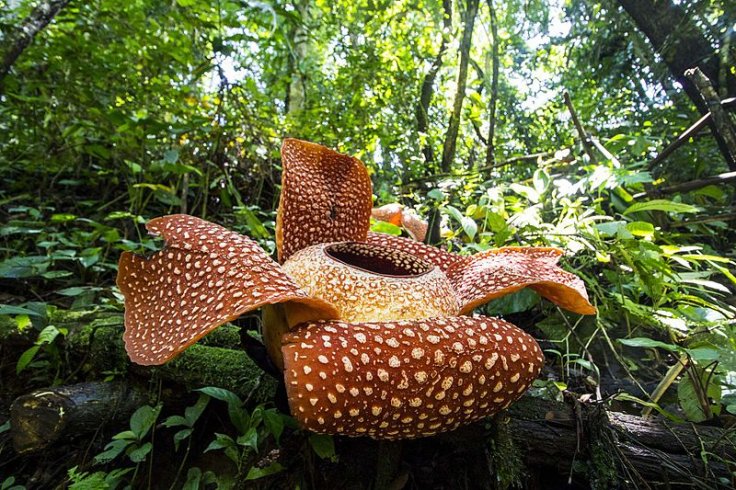Often referred to as "monster flower," due to the parasitic properties and repugnant stench, one of the world's largest flower, rafflesia plant, is thriving in the forest of Indonesia. Indonesian conservationists said that recently they have found the biggest specimen of this monstrous flower.
It should be mentioned that as per an early study, the current climate change or global warming scenario may pose a threat to the growth and life span of the plants. The research, which was published in PLOS Biology a few years ago stated that the number of days when a plant can grow can be expected to decrease by 11 percent by 2100. But this recent finding of the flower in Indonesian forest is showing a positive sign.
Rafflesia in West Sumatran forest

The giant flower Rafflesia tuan-mudae is a fleshy red flower with white blister-like spots on its enormous petals. It came in at a whopping 111 centimetres (3.6 foot) in diameter which is bigger than the previous record of 107 centimetres on a flower which was also found in the West Sumatra forest in 2017, as per Natural Resources and Conservation Center.
Ade Putra at the Agam Conservation Agency in Sumatra stated that "This is the largest Rafflesia tuan-mudae that has ever been documented."
The giant plant
This plant has no roots or leaves as it is parasitic and feeds on a host plant to live, drinking its water and nutrients. The plant can be only visible after the giant flower blooms, which last about one week before it withers and rots.
The Rafflesia's open mouth emits a foul odour similar to rotting meat and because of that, it is called "corpse flower" that mimics the stench of rotting meat to attract insects. This species is found in many South-East Asian countries including the Philippines where scientists recorded a 100-centimetre specimen.










